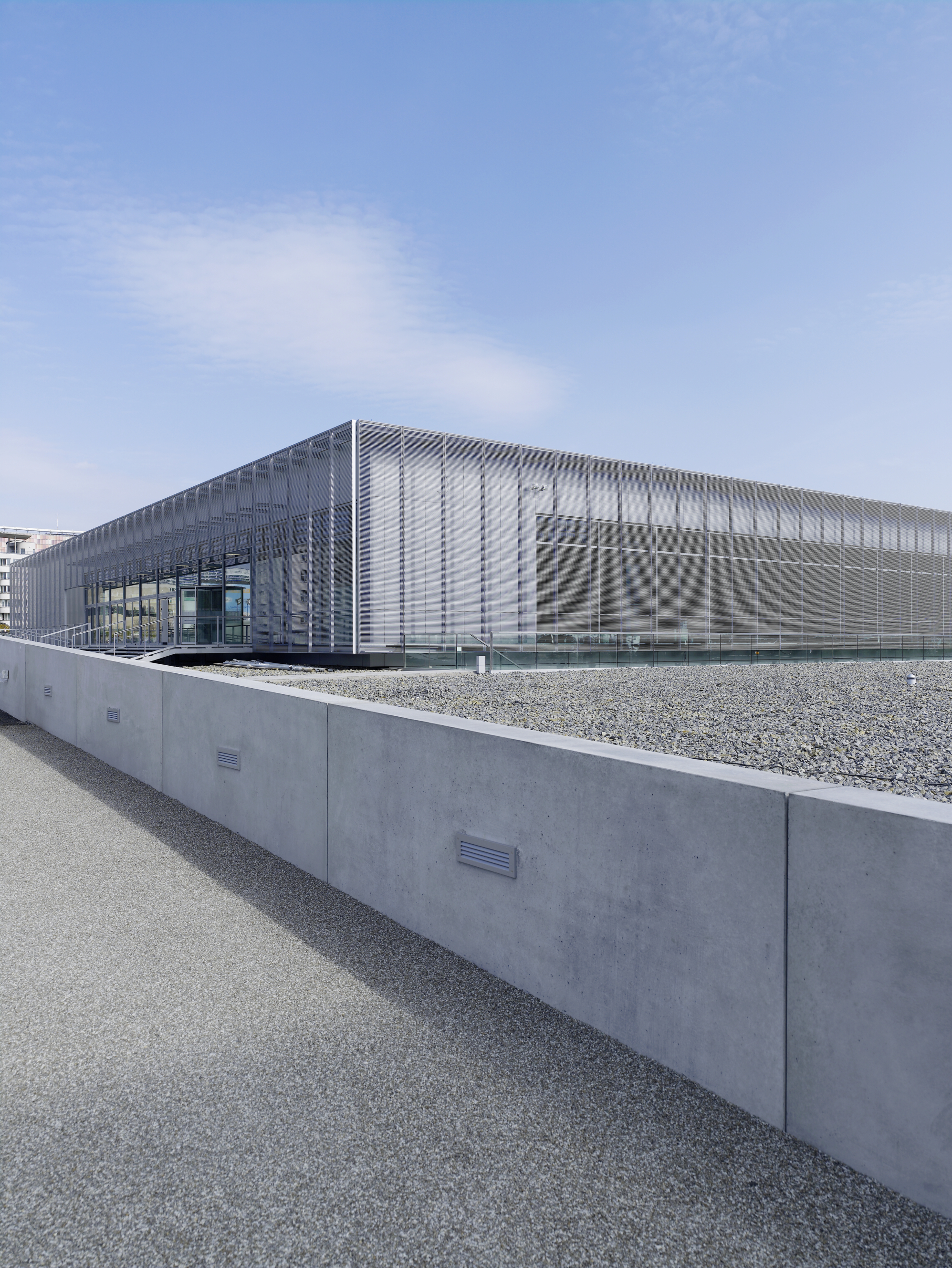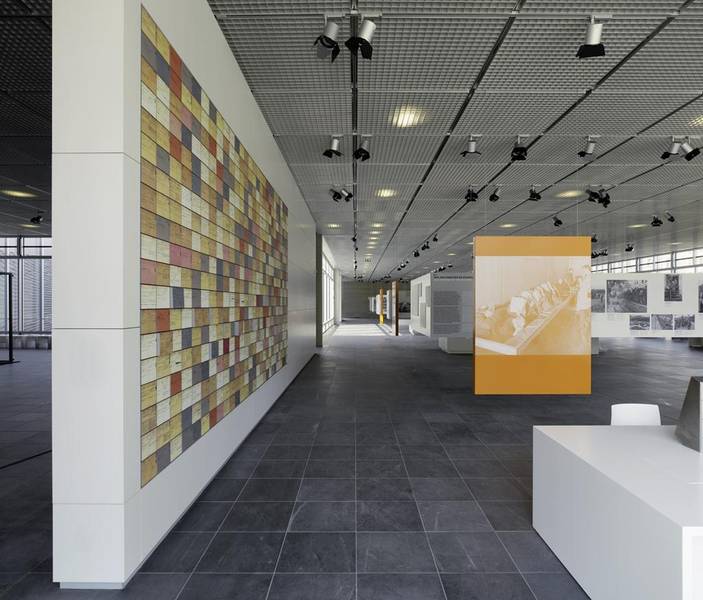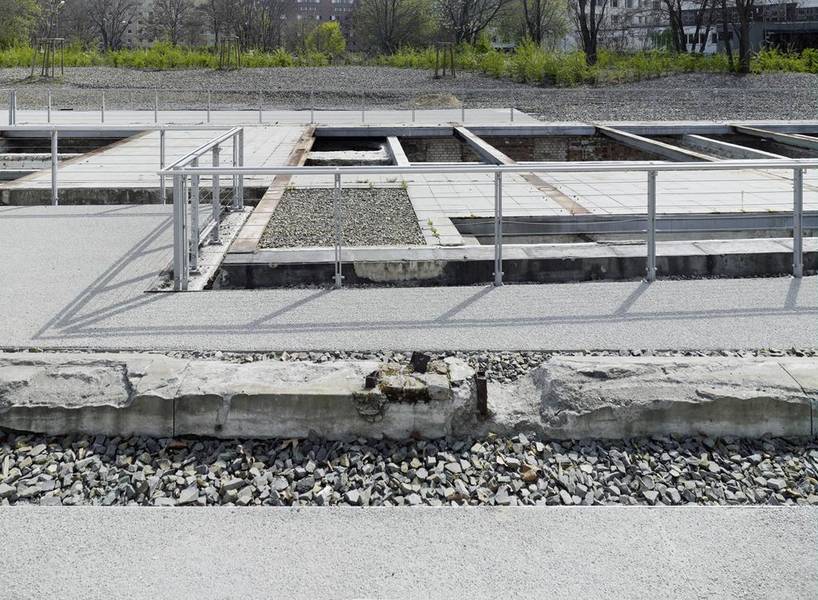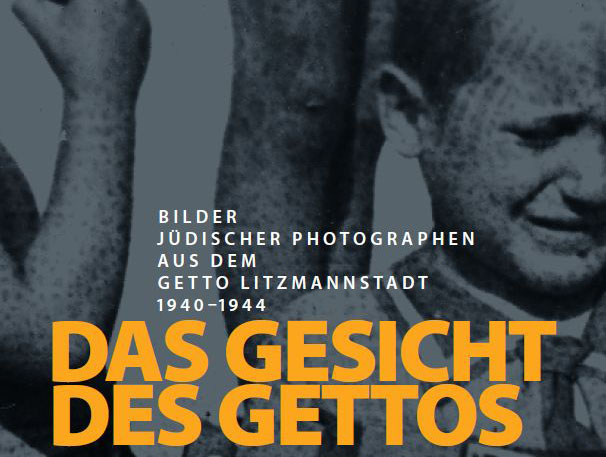

The Topography of Terror (german: Topographie des Terrors) is an outdoor and indoor history museum in
Berlin
Berlin ( , ) is the capital and List of cities in Germany by population, largest city of Germany by both area and population. Its 3.7 million inhabitants make it the European Union's List of cities in the European Union by population within ci ...
,
Germany
Germany,, officially the Federal Republic of Germany, is a country in Central Europe. It is the second most populous country in Europe after Russia, and the most populous member state of the European Union. Germany is situated betwe ...
. It is located on
Niederkirchnerstrasse, formerly Prinz-Albrecht-Strasse, on the site of buildings, which during the
Nazi regime
Nazi Germany (lit. "National Socialist State"), ' (lit. "Nazi State") for short; also ' (lit. "National Socialist Germany") (officially known as the German Reich from 1933 until 1943, and the Greater German Reich from 1943 to 1945) was ...
from 1933 to 1945 was the
SS Reich Security Main Office, the headquarters of the
Sicherheitspolizei,
SD,
Einsatzgruppen and
Gestapo
The (), abbreviated Gestapo (; ), was the official secret police of Nazi Germany and in German-occupied Europe.
The force was created by Hermann Göring in 1933 by combining the various political police agencies of Prussia into one orga ...
.
The buildings that housed the Gestapo and SS headquarters were largely destroyed by Allied bombing during early 1945 and the ruins demolished after the war. The boundary between the American and Soviet zones of occupation in Berlin ran along the Prinz-Albrecht-Strasse, so the street soon became a fortified boundary, and the
Berlin Wall ran along the south side of the street, renamed Niederkirchnerstrasse, from 1961 to 1989. The wall here was never demolished. The section adjacent to the Topography of Terror site is the longest extant segment of the outer wall, as the longer
East Side Gallery
The East Side Gallery (german: East-Side-Gallery) memorial in Berlin-Friedrichshain is a permanent open-air gallery on the longest surviving section of the Berlin Wall in Mühlenstraße between the Berlin Ostbahnhof and the Oberbaumbrücke alo ...
section in
Friedrichshain
Friedrichshain () is a quarter (''Ortsteil'') of the borough of Friedrichshain-Kreuzberg in Berlin, Germany. From its creation in 1920 until 2001, it was a freestanding city borough. Formerly part of East Berlin, it is adjacent to Mitte, Prenzl ...
was part of the inner wall, not visible from West Berlin.
The first exhibitions of the site took place in 1987, as part of Berlin's 750th anniversary. The cellar of the Gestapo headquarters, where many political prisoners were tortured and executed, was found and excavated. The site was then turned into a memorial and museum, in the open air but protected from the elements by a canopy, detailing the history of repression under the Nazis. The excavation took place in cooperation with
East German
East Germany, officially the German Democratic Republic (GDR; german: Deutsche Demokratische Republik, , DDR, ), was a country that existed from its creation on 7 October 1949 until its dissolution on 3 October 1990. In these years the state ...
researchers, and a joint exhibition was shown both at the site and in East Germany in 1989.
In 1992, two years after
German reunification, a foundation was established to take care of the site, and the following year, it initiated an architectural competition to design a permanent museum. A design by architect
Peter Zumthor
Peter Zumthor (; born 26 April 1943) is a Swiss architect whose work is frequently described as uncompromising and minimalist. Though managing a relatively small firm, he is the winner of the 2009 Pritzker Prize and 2013 RIBA Royal Gold Medal.
E ...
was chosen. However, construction was stopped due to funding problems after the concrete core of the structure had been built.
[Lucarelli, Fosco]
''Zumthor’s Topographie des Terrors (1993–2004): visual history of birth, growth and death of a project''
, 14 November 2011 This stood on the site for nearly a decade until it was finally demolished in 2004 and a new building begun.
The construction of the new Documentation Centre according to a prize-winning design by the architect Ursula Wilms (Heinle, Wischer und Partner, Berlin) and the landscape architect Heinz W. Hallmann (Aachen) was finished in 2010. The new Documentation Centre was officially opened on 6 May 2010 by Federal President
Horst Köhler
Horst Köhler (; born 22 February 1943) is a German politician who served as President of Germany from 2004 to 2010. As the candidate of the two Christian Democratic sister parties, the CDU (of which he is a member) and the CSU, as well as the ...
on the occasion of the 65th anniversary of the end of
World War II
World War II or the Second World War, often abbreviated as WWII or WW2, was a world war that lasted from 1939 to 1945. It involved the vast majority of the world's countries—including all of the great powers—forming two opposing ...
. The new exhibition and documentation building and the redesigned historic grounds were opened to the public on 7 May 2010.
History
After the demolition of the ruins in the 1950s, the area was used as a bumper car site and a dumping ground for rubble from the renovation of
Kreuzberg
Kreuzberg () is a district of Berlin, Germany. It is part of the Friedrichshain-Kreuzberg borough located south of Mitte. During the Cold War era, it was one of the poorest areas of West Berlin, but since German reunification in 1990 it ha ...
. The plans for a memorial site on the former site of the
Gestapo
The (), abbreviated Gestapo (; ), was the official secret police of Nazi Germany and in German-occupied Europe.
The force was created by Hermann Göring in 1933 by combining the various political police agencies of Prussia into one orga ...
goes back to 1978, when Berlin architecture critic Dieter Hoffmann-Axthelm was one of the first to note, in essays and surveys, the significance of the former site of the
Gestapo
The (), abbreviated Gestapo (; ), was the official secret police of Nazi Germany and in German-occupied Europe.
The force was created by Hermann Göring in 1933 by combining the various political police agencies of Prussia into one orga ...
,
SD and
RSHA headquarters.
The first exhibition on the site's history was created for the 750th anniversary of Berlin in 1987. The research continued after it, leading to a documentation centre that collected some more evidence for the terror of the
National Socialists
Nazism ( ; german: Nazismus), the common name in English for National Socialism (german: Nationalsozialismus, ), is the far-right totalitarian political ideology and practices associated with Adolf Hitler and the Nazi Party (NSDAP) in Na ...
in Germany. In 1992, a foundation was created for the construction and maintenance of the centre with an associated permanent exhibition. The managing director is Rabbi Andreas Nachama.
A tender in 1993 to design the museum complex was won by the
Pritzker Prize-winning Swiss architect
Peter Zumthor
Peter Zumthor (; born 26 April 1943) is a Swiss architect whose work is frequently described as uncompromising and minimalist. Though managing a relatively small firm, he is the winner of the 2009 Pritzker Prize and 2013 RIBA Royal Gold Medal.
E ...
. Based on the temporary exhibition building, his design was likened to the skeleton of a barracks, allowing light through the glazed gaps in the concrete beams. Although critically acclaimed, the structure proved expensive to build and when the original contractor became insolvent in the middle of construction, no other contractor willing to continue the project for the fixed fee could be found. With the city of Berlin unwilling to pay an additional three to five million Euros for a reduced design and funding from the federal government delayed until more progress was achieved, the site was left with just the concrete stairwells of the design. Having spent 13.9 million Euros already, these were demolished, despite the protests of Zumthor and other architects, in 2004.
Architectural design competition 2005
In June 2005 a new architectural design competition was launched following the aborted partial construction of Zumthor's design. Out of 309 submitted and 23 chosen drafts, architect Ursula Wilms from the Berlin architects office Heinle, Wischer and Partner and landscape architect Heinz W. Hallmann from Aachen won in January 2006 the final round. The draft included a two-storey, ashlar-formed, paned building with an available surface of 3,500 square metres. For the construction around €15 million was available. Another five to nine million Euro was used for the interior and the redevelopment of the historical site. These costs were defrayed jointly by both the federal government and the federal state of Berlin, each contributing 50%. The architects estimated construction costs at a maximum of €20 million and a construction period of two years.
The construction was finished on time and the new building was opened to the public on 7 May 2010.
Building
The open-air exhibition in the trench alongside the excavated segments of cellar wall on
Niederkirchnerstraße
Niederkirchnerstraße () is a street in Berlin, Germany and was named after Käthe Niederkirchner. The thoroughfare was known as Prinz-Albrecht-Straße until 1951 but the name was changed by the socialist German government. The street was the ...
(formerly Prinz-Albrecht-Straße) was retained and sheltered with glass. The room for the permanent exhibition is 800 cubic metres and presents the development and functions of the security apparatuses during the
Nazi regime
Nazi Germany (lit. "National Socialist State"), ' (lit. "Nazi State") for short; also ' (lit. "National Socialist Germany") (officially known as the German Reich from 1933 until 1943, and the Greater German Reich from 1943 to 1945) was ...
.
A room for events at the back of the building can accommodate 200 participants.
In the southern part of the area outside is a copse of robinias, the remains of "Harrys Autodrom" from the 1970s, whereas the rest of the open space is covered with greywacke.
Around the flat-roofed building is a façade made of metal lamellae, which opens the building in a way that it is possible to look out of it to the surroundings anywhere on the ground floor of the building. In the basement is the seminar centre, the library with about 25,000 volumes, the memorial department and offices for 17 employees of the Topography of Terror Foundation.
Exhibitions
Permanent exhibitions
With the inauguration of the new Documentation Centre, three permanent exhibitions are open to the public. All three are presented bilingually in German and English.

Topography of Terror. Gestapo, SS, and Reich Security Main Office on Wilhelm- and Prinz-Albrecht-Straße

The "Topography of Terror" permanent exhibition was shown in the open air until the new Documentation Centre opened.
The thoroughly revised and redesigned "Topography of Terror" permanent exhibition is presented over 800 square meters in the new building. The focus of the exhibition is the central institutions of the
SS and police in the "
Third Reich
Nazi Germany (lit. "National Socialist State"), ' (lit. "Nazi State") for short; also ' (lit. "National Socialist Germany") (officially known as the German Reich from 1933 until 1943, and the Greater German Reich from 1943 to 1945) was ...
" as well as the crimes they perpetrated throughout Europe. Attention to the Nazi regime's many victim groups will assume a central place alongside the portrayal of the system of terror.
Berlin 1933–1945 Between Propaganda and Terror

A permanent exhibition about the capital Berlin during the "Third Reich" will be on display in the exhibition trench alongside the excavated segments of cellar wall on
Niederkirchnerstraße
Niederkirchnerstraße () is a street in Berlin, Germany and was named after Käthe Niederkirchner. The thoroughfare was known as Prinz-Albrecht-Straße until 1951 but the name was changed by the socialist German government. The street was the ...
(formerly Prinz-Albrecht-Straße). It will address National Socialist policy in Berlin and its consequences for the city and its population.
Topography of Terror Site Tour. The History of the Site

With the opening of the new Documentation Centre, the grounds of the "Topography of Terror" are once again completely open to the public. The site tour, which mainly follows the exposed building remnants, encompasses 15 stations. Informational signs provide an overview of the historic location and the site's use during the Nazi period and the postwar era. The tour also integrates remains of the
Berlin Wall, which have been designated a historic monument.
Special and temporary exhibitions
The Face of the Ghetto. Pictures taken by Jewish Photographers in the Litzmannstadt Ghetto 1940–1944

This special exhibition will be presented in the Topography of Terror Documentation Centre from 23 June 2010 on. It was developed by Dr. Ingo Loose and Dr.
Thomas Lutz
Thomas Lutz (born 1957 in Darmstadt) is the head of the Memorial Museums Department of the Topography of Terror Foundation in Berlin, and active in Holocaust education and research at the national (German) and international level.
Life ...
in cooperation with the State Archive in
Łódź
Łódź, also rendered in English as Lodz, is a city in central Poland and a former industrial centre. It is the capital of Łódź Voivodeship, and is located approximately south-west of Warsaw. The city's coat of arms is an example of cant ...
.
The "House Prison" at Gestapo Headquarters in Berlin. Terror and Resistance 1933–1945
A bilingual German-English exhibition on the "House Prison" at the Gestapo Headquarters was shown in a special open-air exhibition area and included the 'ground memorial' including remains of former basement prison cells.
With altogether 400 photos and documents, for the first time the exhibition comprehensively related the history of the prison at
Prinz-Albrecht-Straße 8 and reminded the fate of numerous detainees.
This presentation lasted from August 2005 to April 2008 on the site of the 'Topography of Terror'.
The Trial of Major War Criminals in Nuremberg
This exhibition was presented on the occasion of the 60th anniversary of the
Nuremberg Trials
The Nuremberg trials were held by the Allies against representatives of the defeated Nazi Germany, for plotting and carrying out invasions of other countries, and other crimes, in World War II.
Between 1939 and 1945, Nazi Germany invaded m ...
and comprised around 110 photo and 50 text documents as well as 15 audio stations. It outlined the genesis, process, ambition and importance of the trial led by the Allies at Nuremberg focussing on the accused, whose culpability for the war crimes is demonstrated.
The presentation was located on the construction hoarding at the area of the Topography of Terror from October 2005 to April 2007.
The "People's Court" - Hitler's Political Tribunal
German-English documentation on occasion of the 70th anniversary of the foundation of the
people's court.
The exhibition was developed in cooperation with the
Memorial to the German Resistance
The German Resistance Memorial Center (german: Gedenkstätte Deutscher Widerstand) is a memorial and museum in Berlin, capital of Germany. History
It was opened in 1980 in part of the Bendlerblock, a complex of offices in Stauffenbergstrasse (fo ...
.
Travelling exhibitions
Fire! Anti-Jewish Terror on "Kristallnacht" in November 1938
The exhibition was developed in cooperation with the
Foundation Memorial to the Murdered Jews of Europe and the
Stiftung Neue Synagoge - Centrum Judaicum. The cooperative project presented on the 70th anniversary of the
Kristallnacht
() or the Night of Broken Glass, also called the November pogrom(s) (german: Novemberpogrome, ), was a pogrom against Jews carried out by the Nazi Party's (SA) paramilitary and (SS) paramilitary forces along with some participation fro ...
pogrom presents historical documentation of the attack, seen around the world, on
German Jewry after five and a half years of Nazi dictatorship.
The presentation was displayed from November 2008 to March 2009 in the
Centrum Judaicum in Berlin.
Library

The library of the Topography of Terror Foundation is a special library focusing on the police, SS, Gestapo in the Third Reich and on the
National Socialism
Nazism ( ; german: Nazismus), the common name in English for National Socialism (german: Nationalsozialismus, ), is the far-right totalitarian political ideology and practices associated with Adolf Hitler and the Nazi Party (NSDAP) in Naz ...
in general. It currently comprises about 25 800 media elements, about 120 regularly and 100 closed magazines. It is situated around a fountain reminding of Zen gardens and freely accessible.
Memorial Museums Department
The Topography of Terror Foundation provides comprehensive advice and coordination tasks in the field of national and international memorial sites. In Germany, the Memorial Museums Department is the central coordination office for memorial sites and initiatives for memorial sites and increasingly promotes the international collaboration.
Exhibition
File:Topography of Terror - Gestapo political prisoners.jpg, Images of political prisoners from the Gestapo archives
Image:Excavated_cells_from_the_basement_of_the_Gestapo_headquarters.jpg, Excavated cells from the basement of the Gestapo headquarters
File:Topography of Terror - bombed Gestapo-SS headquarters.jpg, The bombed out shell of the Gestapo-SS headquarters, 1945
Image:Topography of Terror - Berlin Jews deported.jpg, Photo display of Berlin Jews being deported to their deaths
Nazi Forced Labour Documentation Centre
The last well-preserved former Nazi forced labour camp is located in
Niederschöneweide. In the
Second World War
World War II or the Second World War, often abbreviated as WWII or WW2, was a world war that lasted from 1939 to 1945. It involved the vast majority of the world's countries—including all of the great powers—forming two opposi ...
it served as one of the more than 3000 collective accommodations dispersed throughout the city for forced labourers. The
Documentation Centre on Nazi Forced Labour opened in the summer of 2006 on a part of historical grounds that once belonged to the camp and which are today protected as a monument. The Documentation Centre offers two permanent exhibitions: "Forced Labour in the Daily Round 1938-1945" and "Between two stools. The History of the Italian Military Internees 1943-1945". Entrance and guided tours are free.
"Topography of Terror" tours in Russia
In several Russian cities activists of
Memorial have organised alternative tours, showing visitors locations, buildings and monuments associated with the political terror of the Soviet period, especially of
Lenin
Vladimir Ilyich Ulyanov. ( 1870 – 21 January 1924), better known as Vladimir Lenin,. was a Russian revolutionary, politician, and political theorist. He served as the first and founding head of government of Soviet Russia from 1917 to 1 ...
and
Stalin
Joseph Vissarionovich Stalin (born Ioseb Besarionis dze Jughashvili; – 5 March 1953) was a Georgian revolutionary and Soviet political leader who led the Soviet Union from 1924 until his death in 1953. He held power as General Secretar ...
. Such tours are regularly held in
Ryazan
Ryazan ( rus, Рязань, p=rʲɪˈzanʲ, a=ru-Ryazan.ogg) is the largest city and administrative center of Ryazan Oblast, Russia. The city is located on the banks of the Oka River in Central Russia, southeast of Moscow. As of the 2010 Cens ...
(Central Russia),
Krasnoyarsk
Krasnoyarsk ( ; rus, Красноя́рск, a=Ru-Красноярск2.ogg, p=krəsnɐˈjarsk) (in semantic translation - Red Ravine City) is the largest city and administrative center of Krasnoyarsk Krai, Russia. It is situated along the Yeni ...
(Siberia) and
Khabarovsk (Far East) while
Moscow
Moscow ( , US chiefly ; rus, links=no, Москва, r=Moskva, p=mɐskˈva, a=Москва.ogg) is the capital and largest city of Russia. The city stands on the Moskva River in Central Russia, with a population estimated at 13.0 millio ...
has tours and a website devoted to the theme, "It happened right here" (Это прямо здесь).
"It happened right here" website
References
Further reading
* Publisher: Topography of Terror Foundation, represented by Prof. Dr. Andreas Nachama: ''Topography of Terror. Gestapo, SS and Reich Security Main Office on Wilhelm- and Prinz-Albrecht-Straße. A Documentation'' 1. edition. Berlin 2010, .
* Publisher: Topography of Terror Foundation, represented by Prof. Dr. Andreas Nachama: ''Site Tour "Topography of Terror". History of the Site'' 1. edition. Berlin 2010, .
Movies
* ''Schaltzentrale der Hölle. Was passiert mit der "Topographie des Terrors" in Berlin?'' Documentary, Germany, 2004, 7'08 Min., ZDF-''aspekte'', 20 July 2004
* ''Dokumentationen des Terrors.'' News programme, Germany, 2007, 1'52 Min., Production: ZDF-''heute
''heute'' (; German for ''today'') is a television news program on the German channel ZDF. The main program is broadcast at 19:00, and includes news, with an emphasis on political news from Germany, Europe and the world, plus 'mixed' news from c ...
'', first run: 2 November 2007
External links
Official siteGedenkstättenforumNazi Forced Labour Documentation Centre
*
*
{{Authority control
Berlin Wall
Gestapo
Museums in Berlin
Nazi SS
Nuremberg trials
World War II museums in Germany
Buildings and structures in Friedrichshain-Kreuzberg


 The "Topography of Terror" permanent exhibition was shown in the open air until the new Documentation Centre opened.
The thoroughly revised and redesigned "Topography of Terror" permanent exhibition is presented over 800 square meters in the new building. The focus of the exhibition is the central institutions of the SS and police in the "
The "Topography of Terror" permanent exhibition was shown in the open air until the new Documentation Centre opened.
The thoroughly revised and redesigned "Topography of Terror" permanent exhibition is presented over 800 square meters in the new building. The focus of the exhibition is the central institutions of the SS and police in the " A permanent exhibition about the capital Berlin during the "Third Reich" will be on display in the exhibition trench alongside the excavated segments of cellar wall on
A permanent exhibition about the capital Berlin during the "Third Reich" will be on display in the exhibition trench alongside the excavated segments of cellar wall on  With the opening of the new Documentation Centre, the grounds of the "Topography of Terror" are once again completely open to the public. The site tour, which mainly follows the exposed building remnants, encompasses 15 stations. Informational signs provide an overview of the historic location and the site's use during the Nazi period and the postwar era. The tour also integrates remains of the Berlin Wall, which have been designated a historic monument.
With the opening of the new Documentation Centre, the grounds of the "Topography of Terror" are once again completely open to the public. The site tour, which mainly follows the exposed building remnants, encompasses 15 stations. Informational signs provide an overview of the historic location and the site's use during the Nazi period and the postwar era. The tour also integrates remains of the Berlin Wall, which have been designated a historic monument.
 This special exhibition will be presented in the Topography of Terror Documentation Centre from 23 June 2010 on. It was developed by Dr. Ingo Loose and Dr.
This special exhibition will be presented in the Topography of Terror Documentation Centre from 23 June 2010 on. It was developed by Dr. Ingo Loose and Dr.  The library of the Topography of Terror Foundation is a special library focusing on the police, SS, Gestapo in the Third Reich and on the
The library of the Topography of Terror Foundation is a special library focusing on the police, SS, Gestapo in the Third Reich and on the